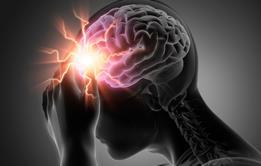Learning is never a pain with paracetamol
This book consists of seven freestanding activities that can be used singly or as a coherent package in a wide range of teaching and learning situations in both academic and vocational courses. It is aimed at post-1 6 chemistry students and their teachers.
The book is organised into two main sections - a series of student activities and a guide for teachers and technicians with equipment lists and answers. Within the section for learner’s there are both written and practical tasks. The practical tasks are both preparative/analytical and problem solving.
Nomenclature
For ease of use some traditional names are retained for chemicals throughout this booklet. Below are listed the traditional names against the systematic names that are commonly used in post-16 chemistry courses in the UK.
| Traditional name/trade name | Systematic name |
|---|---|
| Acetanilide | N-PhenyIethanamide |
| Paracetamol | N-(4-Hydroxyphenyl)ethanamide |
| Phenacetin | N-(4-EthoxyphenyI)ethanamide |
| Phenol | Hydroxybenzene |
Health, safety and technical notes
Read our standard health and safety guidance.
Teachers must consult their employer’s risk assessments before commencing any practical activity. It is good practice to encourage students to do so also. However, this does not absolve teachers from their responsibility to check students’ plans and supervise the activity.
Eye protection and other appropriate protective equipment should be worn for all the experiments in this booklet.
Teachers’ notes
Paracetamol can be taken in a number of ways;
- Tablets (500 mg) - the simplest form of taking a medicine for most adults - 1 or 2 tablets is well below the level at which there are toxic effects.
- Fizzy dispersible tablets (500 mg) - for adults who have trouble swallowing tablets. The paracetamol is mixed with citric acid and sodium hydrogencarbonate which effervesce when put into water. The effervescence rapidly disperses the drug into a fine suspension.
- Paediatric oral solutions (1 20 mg/5 cm3) - for young children who cannot take tablets - note that the recommended dose is a quarter of the adult dose. Also note that this concentration is higher than the normal aqueous solubility - this can be achieved by adding a little ethanol.
- Oral suspensions (250 mg/5 cm’) - for older children and adults who dislike tablets. It has to be a suspension at this concentration as it will not dissolve sufficiently.
- Suppositories (1 25 mg) - drugs are rapidly absorbed from the colon and metabolism is significantly reduced because the drug does not have to go via the stomach, therefore the dose can be lower.
- Capsules (various dosages) -the gelatin coating is ‘slippery’ and the cylindrical shape makes the capsules easier to swallow than tablets. Also, it is a simple way of delivering a mixture of solids.
The toxicity of paracetamol
Why is paracetamol toxic at high doses?
Paracetamol is metabolised to some extent by oxidation to an iminoquinone in a way similar to the chemistry described in the quantitative analysis section. Although the iminoquinone is a very reactive compound, it is rapidly deactivated and converted into a highly water soluble derivative by the addition of endogenous glutathione - a small peptide with a thiol (-SH) group. This ‘conjugation’ by glutathione is a very common elimination pathway of the body. The reaction makes ‘foreign’ compounds so water soluble that they are excreted in the urine.
Our bodies only have a limited amount of glutathione available at any one time and so an overdose of paracetamol rapidly depletes this protective chemical. This depletion allows the iminoquinone and other toxins to build up and seriously damage our cells.
With a knowledge of this chemistry it is easy to understand why the antidote for paracetamol overdose is acetylcysteine, a simple non-toxic thiol which can deactivate the iminoquinone. Acetylcysteine is also a precursor for glutathione synthesis.
Downloads
Paracetamol
Experiment | PDF, Size 1.39 mb
Paracetamol book

This book consists of seven freestanding activities that can be used in a wide range of teaching and learning situations in both academic and vocational courses.
 Currently
reading
Currently
reading
Paracetamol
- 2
- 3
- 4
- 5
- 6
- 7
- 8
- 9



































No comments yet